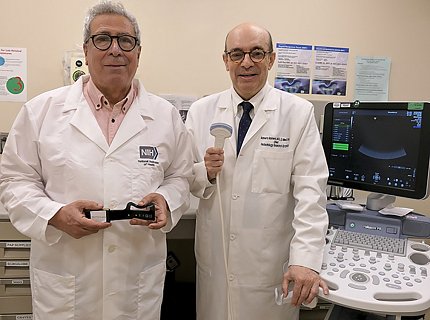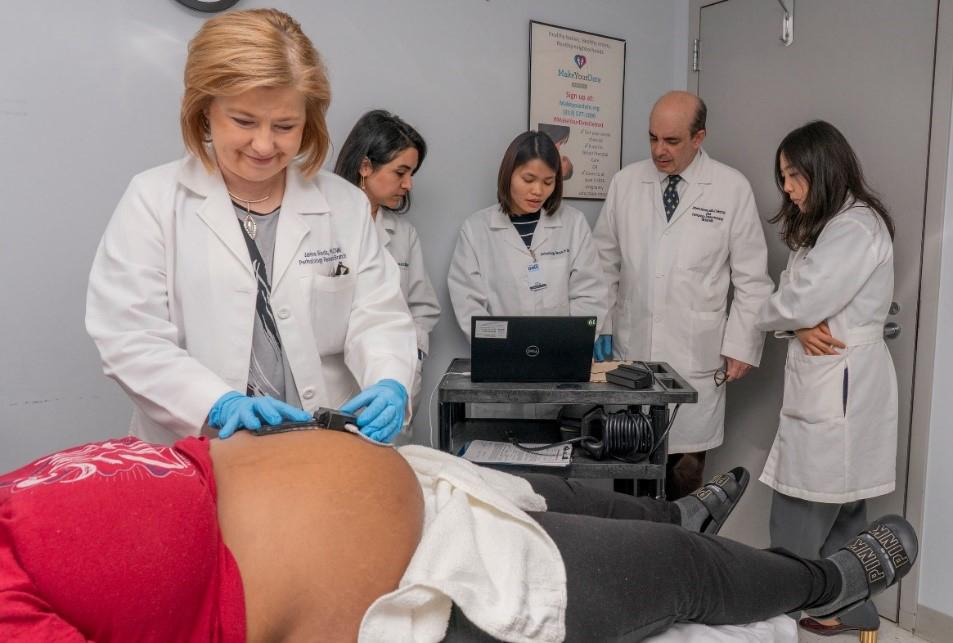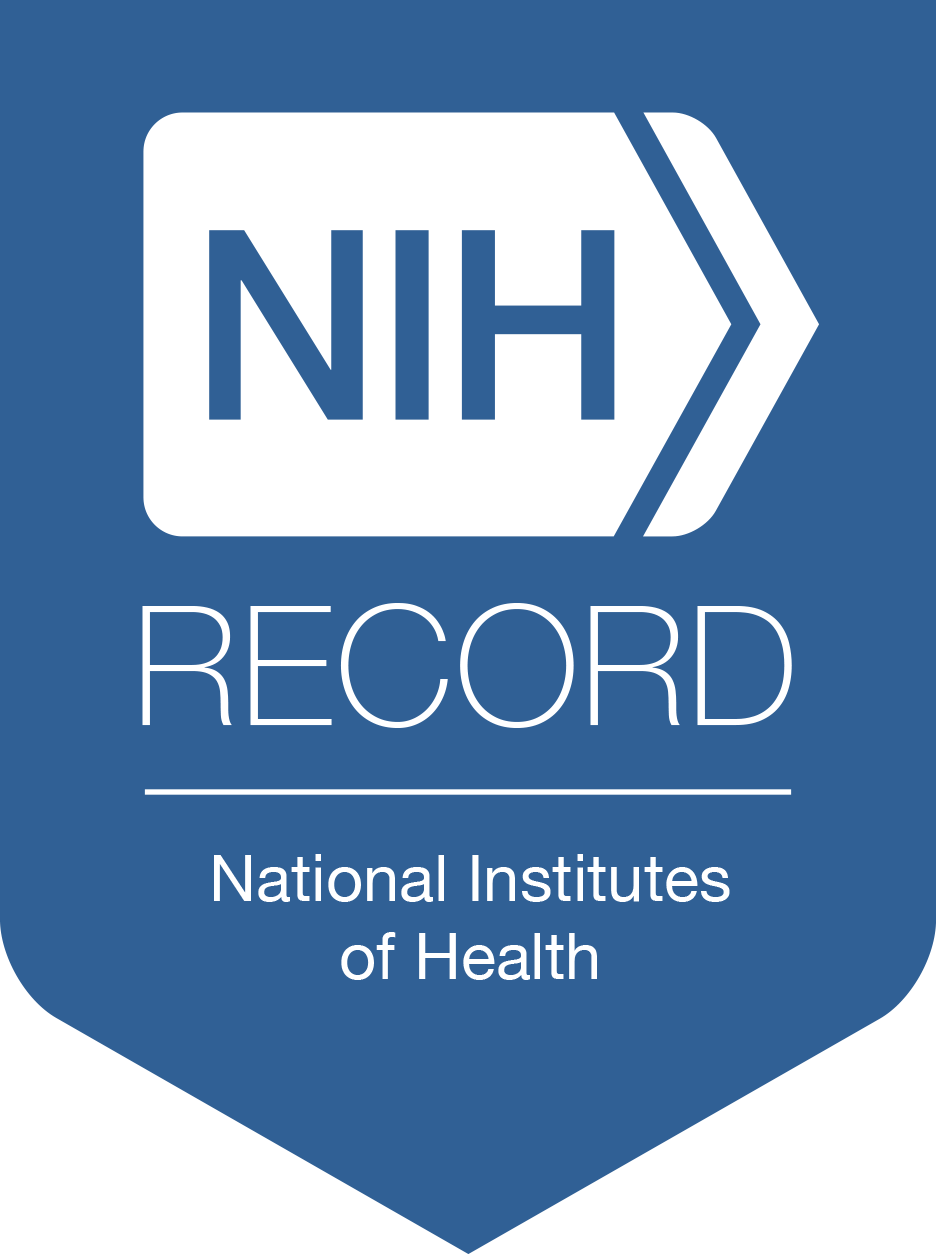Dream Team
NICHD Researchers Invent Placenta Monitoring Device

The following story launches our third-annual series highlighting NIH makers—intramural researchers who devise exciting new drugs, devices, applications, methods and other products. Read more about NIH Makers throughout the summer.
An electrical engineer and an obstetrician walk into a lab … and emerge with an innovative new device.
Dr. Amir Gandjbakhche and Dr. Roberto Romero, both of whom work in NIH’s Eunice Kennedy Shriver National Institute for Child Health and Human Development (NICHD), collaborated on a placenta monitoring device that recently obtained several patents. The researchers were brought together through an NICHD affinity group (Maternal-Fetal Medicine & Translational Imaging), an undertaking spearheaded by the institute’s scientific director Dr. Chris McBain and clinical director Dr. Catherine Gordon to bring multidisciplinary groups together and foster collaboration.
The placenta is a disc-shaped organ that forms in the uterus during pregnancy. It attaches to the uterine wall and connects to the fetus via the umbilical cord. It is the interface between mother and fetus, but we know little about this organ that may actually be one of the most complex after the brain.

Photo: Tilia Lucida/Shutterstock
Gandjbakhche and Romero sought to understand how the placenta functions during pregnancy. It is a “unique, magical organ … that grows from a few cells to half of a kilogram” over the course of pregnancy, said Romero. “It functions as the fetal lung (exchanging oxygen and CO2), acquires nutrients like a bowel and also serves as a kidney for metabolic excretion.”
But, up until recently, doctors could only estimate vital measures of placental health such as oxygenation via indirect methods, like measuring changes in fetal heart rate. Placental oxygenation is incredibly important for developing fetuses; suboptimal delivery of oxygen causes fetal growth restriction, which has been linked to chronic health conditions later in life, and in extreme cases, can lead to fetal death.
In their collaboration, Gandjbakhche and Romero used placental oxygenation as a proxy measure for overall placental function.

Gandjbakhche, who is a senior investigator and head of the Section on Translational Biophotonics, drew inspiration from a fingertip pulse oximeter when designing the placental monitoring device. The pulse oximeter measures how much light passes through a person’s fingertip and uses that to calculate blood oxygen saturation, or how well a person’s blood is carrying oxygen through their body.
“The concept of the device is similar to a pulse oximeter,” Gandjbakhche explained, “but the environment is very different because the light first has to pass through several layers (skin, fat, uterus and then placenta), and the device needed to distinguish between those layers and the placenta.”
After many rounds of development, he and his research fellow Dr. Thien Nguyen devised a wireless, wearable device that uses near-infrared spectroscopy to measure changes in oxygenated and deoxygenated blood in the placenta. The device sits on the mother’s abdomen to collect data and can be integrated into standard monitoring systems. Gandjbakhche also built algorithms to differentiate signals from maternal and fetal tissues, which makes the readings more accurate and meaningful. The multi-sensor device is able also to measure fetal and maternal heart rate, fetal movement and uterus contraction.

Gandjbakhche tested the product in a pilot study in partnership with Romero, chief of the Pregnancy Research Branch. The collaborators are now preparing to launch larger clinical trials for the next phase of testing.
Ultimately, they envision the device being integrated into telehealth systems for home use. It could be useful for monitoring high-risk pregnancies, and for early detection of placental insufficiency and fetal hypoxia, while continuously monitoring fetal and maternal vital signs. The device could be particularly useful for pregnant patients in rural areas or so-called maternal care deserts, where they may not have adequate access to prenatal care.

Deployment of the device is likely still several years away, but Gandjbakhche and Romero are grateful for the infrastructure at NIH that supports and encourages such collaborations.
Thousands of NIH investigators collaborate to accomplish their goal of improving human health, said Romero. “Biophotonics and obstetrics alone won’t do it.”
“Our story is one of team science in which engineers, physicists, biologists and physicians converged to address an important clinical need,” Gandjbakhche said. “Without the affinity group that brought us together, this would be a device in a closet.”
